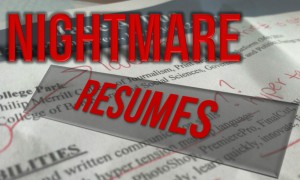EDITOR’S NOTE: Links to selected media news from the past week.
REPORTING TOOLS OF THE FUTURE?: Two artists curious to know how far technology can stretch the bounds of surveillance have built a lamp that can overhear conversations and tweet fragments of them, reports Wired. Here’s a recent nugget from the feed: “I’m going insane being so cautious with money.” In (sort of) related news: NPR features a product called SuperShoes, insoles that contain “vibrotactile ticklers” that connect to a person’s mobile device and “tickle” the person to the left or right in efforts to lead them to a destination.
DIGITAL GROWTH SLOWS AT NEWSPAPERS: Nieman Lab analyzes two ad revenue reports for 2013 and finds that while overall digital advertising rose by 17 percent last year (Interactive Advertising Bureau), newspapers’ digital ad revenues rose only 1.5 percent (Newspaper Association of America.) Also interesting: digital ad revenues overtook broadcast TV ad revenues for the first time last year.
CRAZY STORIES ABOUT CATS, RESUMES AND TYPOS: A former Detroit Free Press editor tells AJR.org the unbelievable resume misfires he’s seen over the years, including a tale about a sick cat and a cover letter. A full summary of what journalism recruiters love (and hate) about today’s resumes can be found here.
SOME BEAUTIFUL GIFS: There is a growing recognition that GIFs have potential to be so much more than the captured pop culture moments that illustrate Buzzfeed-style listicles. London’s Saatchi Gallery created a competition to “recognize artists pushing the genre forward,” reports Fast Company. Among the work from winners: a faded yellow playground toy caught in a perpetual spin; the jerky, yet dancer-like movements of a pigeon; and a woman at a jukebox, with only a lock of hair caught moving in a breeze as she stares at a spinning record.
NYT BREAKS LOSING STREAK: The New York Times broke a three-year losing streak in ad revenues, reporting growth in both its print and digital ad business in the first quarter of 2013, AdAge says. Digital reader revenues were up even more, by 13.6 percent.The Wall Street Journal suggests this may be “more a blip” than the end of the long ad decline.
CONFESSIONS IN CORRECTIONS: A professor and Ph.D student, after studying print corrections in three newspapers, are advocating for more robust corrections that not only clear up errors, but are transparent about what “flawed procedure” led to the mistake, reports Craig Silverman at Poynter. The scholars studied nearly 1,500 corrections and developed criteria for a good correction.
WELL-DESIGNED ‘HOMEWORK?': David Leonhardt, editor of the Upshot, the New York Times’ new effort to explain the news, hopes the project will serve as a laboratory that experiments with new ways of telling stories that influences the entire news organization, reports Nieman Journalism Lab. A Gigaom review by Matthew Ingram of the new site says it is “well-designed” and has “useful background and context,” but points to another review by Gigaom founder Om Malik who called inaugural efforts “a little bland” and, like “homework.”
NO LESSONS FROM THE NEWSROOM: Aaron Sorkin, creator of HBO series The Newsroom, told attendees of a Tribeca Film Festival event that he does not know more about journalism than actual journalists, according to BuzzFeed: “…I wasn’t trying to and I’m not capable of teaching a professional journalist a lesson.”
‘WHEN IT BLEEDS, IT TWEETS:’ So says Tow Center for Digital Journalism Fellow Nick Diakopoulos in a Fast Company post where he charts how the more socially deviant an event or topic is, the more likely it will be retweeted.
VERIFIED NEWS ON FACEBOOK: In its latest push to promote newsworthy content, Facebook has teamed up with news agency Storyful to create a new page called FB Newswire. According to Mashable, journalists from Storyful will verify trending news on Facebook before it is shared on the FB Newswire.
SLATE ADDS MEMBERSHIPS: Slate announced a $5-a-month premium membership service called Slate Plus that gives subscribers special access to writers and premium web design features. While MediaBistro calls it “a great idea,” Gigaom notes some readers “aren’t enamored“.
This story includes contributions from Lisa Rossi, Leslie Walker, Sean Mussenden, Mary Clare Fischer, Dan Appenfeller and Jessica Suss.









Leave a Comment